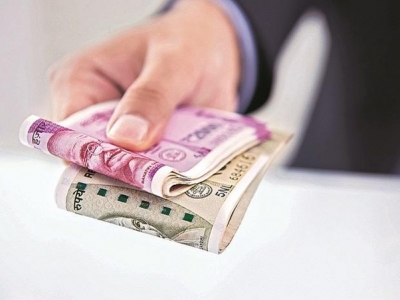
Rupee is the common name for the currencies of India, Indonesia, the Maldives, Mauritius, Nepal, Pakistan, Seychelles, and Sri Lanka, and of former currencies of Afghanistan, all Arab states of the Persian Gulf (as the Gulf rupee), British East Africa, Burma, German East Africa, the Trucial States, and Tibet.
The Indian rupees (?) and Pakistani rupees (?) are subdivided into one hundred paise (singular paisa) or pice. The Mauritian, Seychellois, and Sri Lankan rupees subdivide into 100 cents. The Nepalese rupee subdivides into one hundred paisa (singular and plural) or four Sukaas.
The immediate precursor of the rupee is the r?piya—the silver coin weighing 178 grains (11.53 grams) minted in northern India by first Sher Shah Suri during his brief rule between 1540 and 1545 and adopted and standardized later by the Mughal Empire. The weight remained unchanged well beyond the end of the Mughals till the 20th century.
The Hindustani word rupy? is derived from the Sanskrit word r?pya, which means “wrought silver, a coin of silver”, in origin an adjective meaning “shapely”, with a more specific meaning of “stamped, impressed”, whence “coin”. It is derived from the noun r?pa “shape, likeness, image”. The word r?pa is further identified as related to the Dravidian root uruppu, which means “a member of the body”. Also, the word r?pam is rooted in Tamil as uru (shape) derived from ur (form) which itself is rooted in ul meaning “appear”.
Picture Credit : Google



